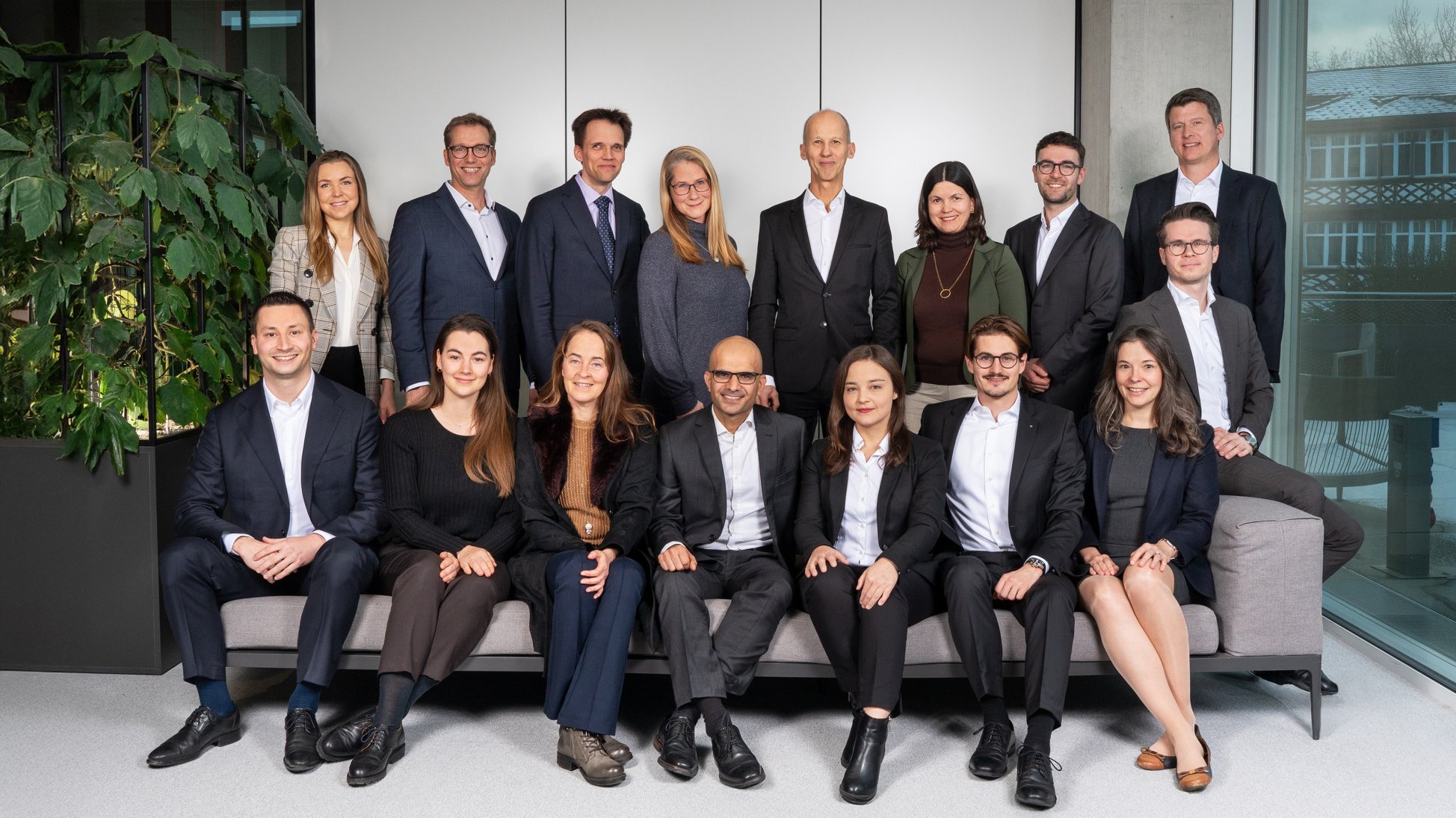
At the Chair for Innovation Management at the University of St.Gallen our highly motivated team is dedicated to leading innovation research and high impact by combining rigor and relevance. Together with our international research partners in industry, we identify patterns of innovation and business models and develop tools for the effective management of innovation. Our main areas of research are: Strategic Management of Innovation, Business Model Innovation, Management of Emerging Technologies, and Sustainable Business Innovation.

Prof. Dr. Oliver Gassmann | Prof. Dr. Felix Wortmann | Dr. Wolfgang Bronner | Robin Deuber | Sebastian Otto | Vincent Paffrath | Ugne Potthoff | Manuel Wlcek
Founded in 2013, the Bosch Internet of Things (IoT) Lab is a cooperation between the University of St. Gallen, ETH Zurich and the Bosch Group. The Bosch IoT Lab investigates business models in the Internet of Things and explores disruptive IoT platforms, products and services. In the realm of “Connected Business”, the focus is on managing the digital transformation of large manufacturing companies driven by IoT-enabled services and data. In the realm of “IoT Platform Economy”, the focus is on building and managing platform business successfully. Finally, in the area of “IoT Technology Exploration”, the Lab develops and validates products and services in the domains of mobility, energy and health. Please click HERE for more information.

Prof. Dr. Oliver Gassmann | Prof. Dr. Alexander Schuhmacher
Our interdisciplinary team of academics and industry experts advances the understanding of innovation practices of leading pharmaceutical companies. We deliver impactful insights that bridge scientific research with practical application, focusing on how pharmaceutical companies create and capture medical and commercial value through innovative R&D. Our aim is to support leading companies in overcoming the R&D productivity gap, thereby helping to maintain the affordability of healthcare systems. Click HERE for more information.

Prof. Dr. Oliver Gassmann | Uliana Schmück | Mario Mühlematter
The Emerging Technologies Lab is primarily concerned with examining and assessing new technologies with a particular emphasis on business models and business opportunities. Distributed Ledger Technologies (e.g., Blockchain) are one of the Lab’s core research topics. In order to evaluate the potential of DLTs/Blockchain within the industry context, the Lab continues to operate its working group, which was originally established in 2017. Furthermore, we initiated a long-term research project with Siemens, which will extensively investigate the implications of DLTs on the platform economy. Finally, we have a project examining the potential of AI in selected application areas from a business model perspective.

Prof. Dr. Maximilian Palmié | Dr. Monica Barroso | Dr. Ashkan Fredström | Daniel Heigermoser | Selina Lorenz | Philip Rodak | Anna Mader | Stephanie Rüegger | Aristea Saputo
The Sustainability Innovation Lab concerns itself with the management of sustainability transformations of firms, industries, and geographic regions (cities and rural areas). Its main topics of interest and expertise include business model innovation (i.e., the transition to circular business models/sustainable business models), the management of ecosystems and stakeholder involvement/stakeholder engagement, as well as scaling. It often studies these topics in the context of digital technologies (e.g., Artificial Intelligence), alternative technologies (e.g., CNG-fueled vehicles), and their implementation for enhanced sustainability (e.g., smart mobility, smart cities). Our findings on these topics are published in top-tier academic journals as well as in practice-oriented articles and books. Besides conducting research on these topics, we actively engage in application-oriented projects and cooperate with industry partners. The Sustainability Innovation Lab is currently involved in projects funded by firms, the Swiss National Science Foundation (SNSF/SNF), and the Swiss Federal Office of Energy (SFOE). Previously, the Sustainability Innovation Lab was active in the Horizon 2020 project “Smarter Together” funded by the European Commission from 2016 to 2021 and in the Swiss Competence Center for Energy Research (SCCER) CREST funded by Innosuisse from 2014 to 2020. In the SCCER, the Sustainability Innovation Lab was leader of the section “Energy, Innovation, Management”. If you want to receive more information or if you are interested in cooperating with us, please contact maximilian.palmie@unisg.ch.

Prof. Dr. Oliver Gassmann | Prof. Dr. Max von Zedtwitz
GLORAD is the Center for Global R&D and Innovation with offices in St. Gallen (CH), Kaunas (CEE), Heilbronn (DE), Shanghai (CN), Silicon Valley (USA), and Sao Paulo (LATAM). Click HERE for more information.

Prof. Dr. Oliver Gassmann | Prof. Dr. Reto Hofstetter | Prof. Dr. Andreas Herrmann
The Center for Innovation at the University of St. Gallen was founded in May 2007 and is based on a cooperation between the Institute of Technology Management (Prof. Dr. Oliver Gassmann) and the Center for Customer Insight (Prof. Dr. Andreas Herrmann, Prof. Dr. Reto Hofstetter, Prof. Dr. Wolfgang Jenewein, Prof. Dr. Ernst Mohr). Click HERE for more information.
Professor of Technology Management with special focus on Innovation Management
Personal Assistant
Head of Energy Innovation Lab
Full Professor Strategic Management
Project Employee
Research Associate
Research Associate